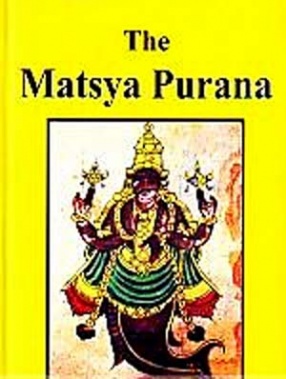Matsya Purana English Pdf
- 0 Comments!

Matsya Purana. The Matsya Purana evolves the legend further, by identifying the fish-savior (Matsya) with Vishnu instead of Brahma. The Purana derives its name from Matsya. The legend as it appears in section 1.12 states that when a little fish appears to Manu, he recognizes Vishnu Vasudeva in the fish.
Book Source: dc.contributor.author: Basu, B.
• The Matsya Purana Introduction There are eighteen major Puranas or mahapuranas, the word 'maha', meaning great. There are also several other minor Puranas or upapuranas, the word 'upa' signifying minor.
Amongst the eighteen mahapuranas, the Matsya Purana is number sixteen. The Puranas themselves describes the five characteristics (pancha lakshana) that a text must satisfy before being classified as a mahapurana. That is, any such text must dscribe five different subjects. These are the original creation of the universe (sarga), the periodical process of destruction and re-creation (pratisaryga), the various eras (manvantara), the histories of the solar dynasty (surya vamsha), and lunar dynasty (chandra vamsha) and royal genealogies (vamshanucharita).

The Matysa Purana describe these five different subjects. Instruktazh po tehnike bezopasnosti v kabinete lfk. Traditionally, the Ramayana is believed to have been composed by the sage Valmiki and the Mahabharata by the sage Vedavyasa.
We have huge collection of unlimited Dil hai tumhara hd mp4 full movie 's songs. If you liked or unliked Dil hai tumhara hd mp4 full movie music, please for Dil hai tumhara hd mp4 full movie's hd mp4 videos or mp3 songs as per as below comment box. Dil hai tumhara mp4 video song free download. Download full HD MP4 Dil hai tumhara hd mp4 full movie song on android mobile. If You are unable to download Dil hai tumhara hd mp4 full movie song, please.
Vedavyasa was the son of Satyavati and the sage Parashara. His real name was Krishna Dvaipayana. The word 'Krishna' means dark and he came to acquire the name because he was dark in complexion. The word dvipa means island and the sage acquired the name of Dvaipayana as he was born on an island.
The Mahabharata has one lakh shlokas or couplets. After composing the Mahabharata, Vedavyasa composed the eighteen mahapuranas. These texts have four lakh shlokas between them, although they are not equal in length. The Matsya Purana is a medium-length Purana, and consists of fifteen thousand couplets. The longest Purana, the Skanda Purana, has eighty-one • thousand.
And the shortest Purana, the Markandeya Purana, has only nine thousand. The fourteen thousand shlokas of the Maysya Purana are divided into two hundred and ninety-one chapters (adhyaya). The eighteen Mahapuranas are sometimes divided into three groups, with six Puranas in each group.
There are 33 million administrative demigods mentioned in the Vedas. But the primary gods are Brahma, Vishnu and Shiva. Brahma is regarded as the creator, Vishnu as the maintainer, and Shiva the destroyer. Since all three are important gods, any sacred text will glorify each of them. But the relative emphasis often varies from text to text. For example, a text which spends many chapters on the act of creation tends to glorify Brahma relatively more and is known as a rajasika Purana. A text which describes the forms (avatara) of Vishnu in great detail tends to glorify Vishnu more and is known as a sattvika Purana.
A text mainly concerned with rituals and norms tends to attach more importance to Shiva and is known as a tamasika Purana. The word 'matsya' means fish. Usually Vishnu is regarded as having had nine incarnations, with a tenth one, Kalki, due to come in the future. The names of these incarnations are as follows. Matsya or fish. This is sometimes also referred to as the mina (fish) avatara.
Kurma or turtle.3. Varaha or boar.4.
Nrisimha or narasimha, the half-man and half-lion.5. Vamana or dwarf.6. The Matsya Purana is so named because it was first recited by Vishnu himself, in his incarnation of a fish. Vedavyasa did much more than compose the Mahabharata and the Puranas.
So far as the Vedas are concerned. Krishna Dvaipayana had four other disciples. But the Puranas were taught only to Romaharshana.
This is what Romaharshana has to say. Romaharshana and the Other Sages ( Setting the scene ) • There was a forest known as naimisharanya. Many years ago, several sages organized a yajna (sacrifice) in the forest. After the sacrifice was over, the assembled sages told Romaharshana. You have recited to us many Puranas.
These subject matter is so pleasing that we would like to hear them once more. Please satisfy our thirst for hearing. I will recount for you the most holy of all the Puranas, replied Romaharshana. This is the great Matsya Purana, told by Vishnu to Manu. Get prepared for I am about begin. Vishnu and Manu There used to be a king named Manu.
He was the son of the sun-god. In fact, in every era, there are fourteen manus. The Manu mentioned here is the seventh in the present era and his name was Vaivasvata Manu.